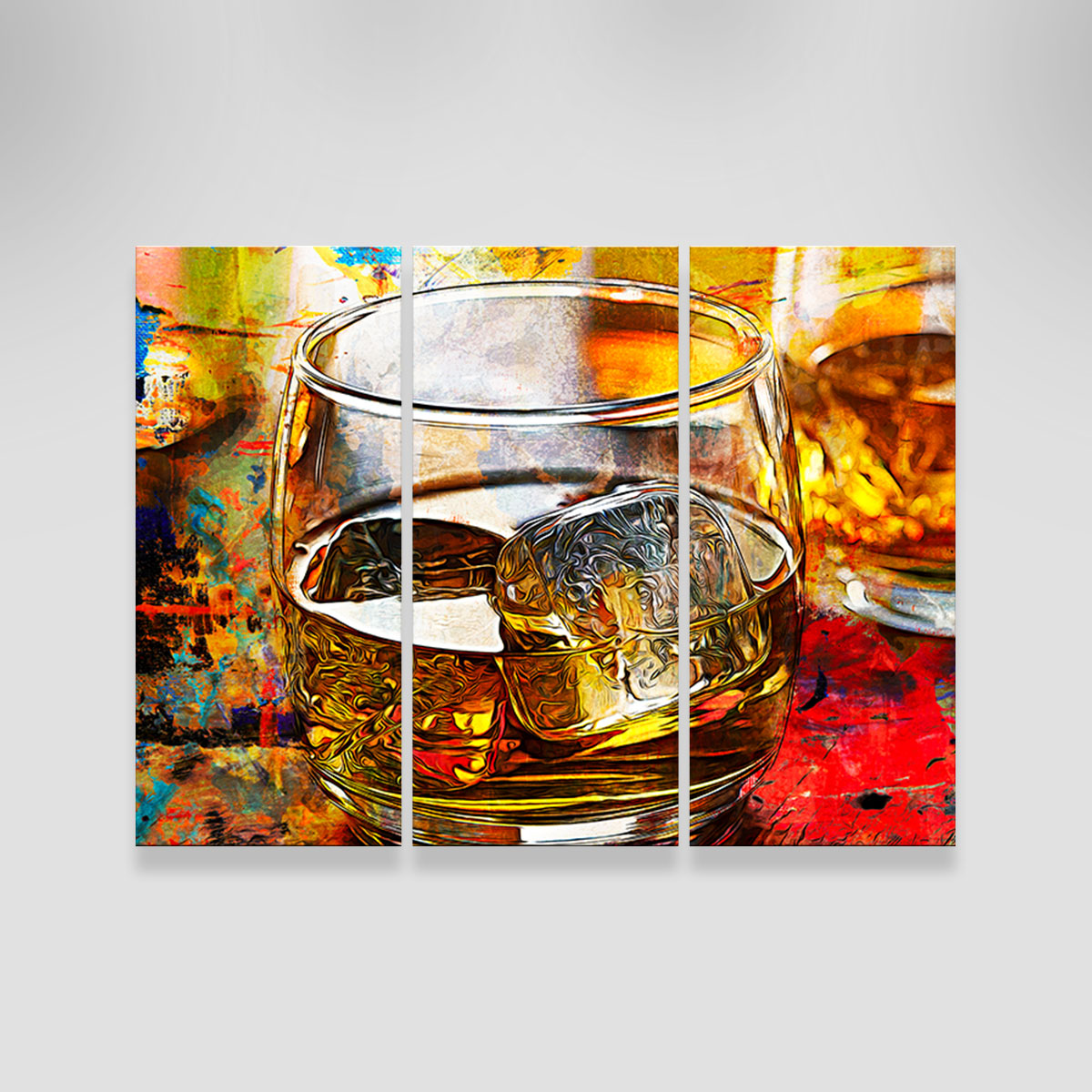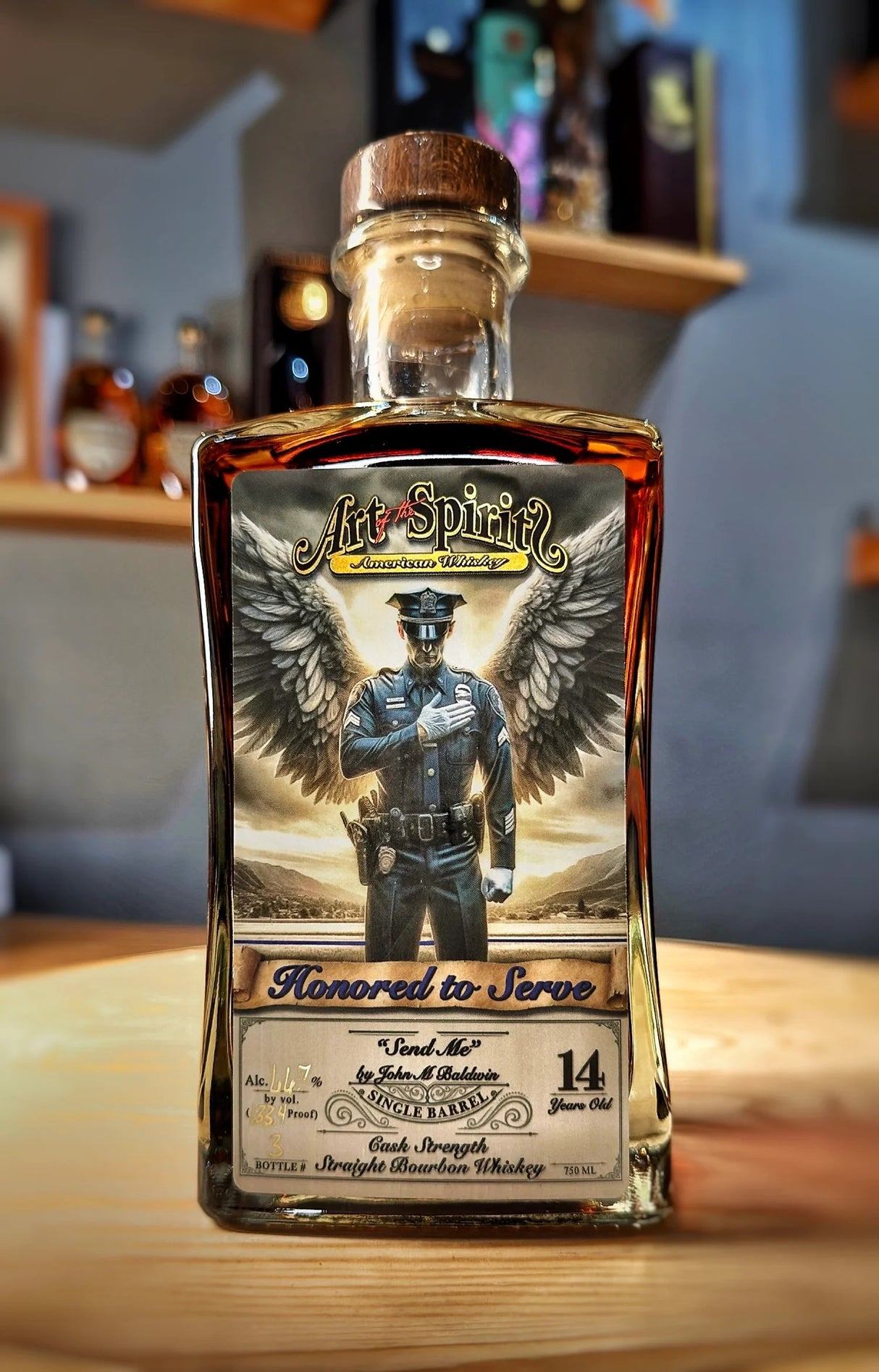Explore the World of Bourbon Art: A Trip With Culture and Workmanship
Explore the World of Bourbon Art: A Trip With Culture and Workmanship
Blog Article
The Value of Whiskey Art in Celebrating Heritage and Craftsmanship in the Beverage Sector
The elaborate partnership in between bourbon art and the event of heritage and workmanship within the drink sector can not be overstated. Via attentively made tags and containers, bourbon brands encapsulate their historical roots and the artisanal abilities that define their manufacturing techniques. This imaginative dimension not only boosts market charm yet also serves as an avenue for cultural narration, cultivating a much deeper connection in between the consumer and the craft. As we explore the numerous facets of this topic, intriguing concerns concerning the effect of modern fads on standard methods develop, triggering more evaluation.
The Historical Origins of Whiskey
At the heart of bourbon's attraction exists a rich tapestry of historic origins that trace back to old human beings. The origins of scotch can be connected to the purification practices of the Sumerians and Babylonians around 2000 BCE, where early forms of fermented grain beverages began to arise. Nevertheless, it was in the Middle Ages that the art of distillation progressed substantially, especially in Ireland and Scotland, causing the creation of whiskey as we understand it today.
The term "bourbon" itself originates from the Gaelic word "uisce beatha," suggesting "water of life." This phrase underscores the social relevance of bourbon in Celtic cultures, where it was often associated with routines, celebrations, and common bonding. By the 15th century, purification came to be an acknowledged craft within reclusive areas, leading the way for the facility of lawful distilleries.
As trade paths increased, scotch's popularity expanded, transcending regional borders and capturing the passion of aficionados worldwide. Limited Edition. This historical trip shows not just the craftsmanship behind bourbon manufacturing but likewise its essential function in social and cultural contexts, noting it as a considerable drink throughout background
Artistic Expression in Branding
Bourbon branding stands as an engaging intersection of virtuosity and business, where aesthetic identification plays an essential role in shaping customer understanding. The appearances of scotch tags, packaging, and advertising materials reflect not just the brand's story yet likewise its core worths and heritage. With imaginative expression, distilleries communicate a narrative that reverberates with consumers, evoking feelings and stimulating links.
Making use of shade, typography, and images in branding serves to differentiate products in a saturated market. For instance, traditional concepts may evoke a feeling of credibility and craftsmanship, while contemporary styles can represent development and forward-thinking. This critical imaginative instructions boosts brand name recognition and loyalty, permitting customers to create an individual connection with the whiskey they select.
Furthermore, creative expression in branding commonly offers as a celebration of local heritage. Distilleries regularly integrate local icons or historical referrals into their layouts, creating a feeling of area that welcomes customers to take part in a wider social experience. Inevitably, the artistry behind whiskey branding not just boosts aesthetic appeal however likewise improves the general story of the brand name, promoting a deeper appreciation for the craftsmanship and heritage ingrained in each container.
Workmanship in Bottle Layout
The artistry noticeable in whiskey branding prolongs past visual identity to include the craftsmanship associated with bottle design. Each bottle acts as a vessel not simply for the spirit within, yet additionally for the tale it tells regarding its high quality, practice, and origin. The style process needs meticulous attention to detail, as aspects such as closure, material, and shape add substantially to the total perception of the whiskey.
Workmanship in container layout includes choosing top notch glass that can improve the scotch's color and quality, while additionally offering a tactile experience for the consumer. The shape of the bottle need to be both aesthetically attractive and practical, frequently reflecting the heritage of the brand name. Lots of distilleries select distinct forms or embossed logo designs that stimulate a feeling of authenticity and background.
Furthermore, the tag layout and typography play a critical role in communicating the brand name's story. Realism Art. A well-crafted container not only captivates the customer's eye yet additionally enhances the brand's dedication to high quality and tradition. By doing this, the craftsmanship of container style becomes a crucial aspect of the whiskey experience, merging virtuosity with an extensive respect for heritage
Cultural Value of Whiskey Art
Celebrating tradition and workmanship, the social significance of whiskey art goes beyond mere aesthetics, intertwining with the website link social and historical narratives of the areas where it comes from. Each container functions as a canvas, illustrating the distinct tales, folklore, and practices that have formed regional whiskey-making techniques. The complex layouts often reflect the heritage of the distillers, including icons and motifs that resonate with the society and values of their neighborhoods.

Additionally, scotch art plays a vital function in common events and events, functioning as a tangible web link in between people and their shared experiences. By valuing the artistry in whiskey product packaging, customers cultivate a much deeper understanding and regard for the craft, inevitably enhancing their enjoyment of the drink itself.
Modern Trends in Bourbon Presentation
Recently, the discussion of whiskey has advanced to reflect modern tastes and patterns while still honoring standard workmanship - Limited Edition. Distilleries are significantly focusing on aesthetic components that improve the total alcohol consumption experience, bridging the void in between heritage and modernity
Cutting-edge bottle designs have emerged, commonly including lasting products and creative tags that tell compelling stories. Numerous brands now collaborate with neighborhood artists, instilling their products with one-of-a-kind aesthetic expressions that reverberate with customers. In addition, limited-edition launches are commonly packaged in collectible containers, including value and allure for connoisseurs.

Verdict
To conclude, bourbon art offers as an important conduit for expressing the heritage and craftsmanship fundamental in the beverage industry. Through detailed branding, cutting-edge container styles, and culturally substantial artistic aspects, whiskey brands properly recognize their traditions and get in touch with customers. This creative story not only raises the appreciation of scotch but likewise reinforces community identity and pride amongst manufacturers. Ultimately, bourbon pop over here art plays an important role in preserving and celebrating the abundant cultural tapestry of whiskey-making.


Craftsmanship in container layout includes selecting high-quality glass that can enhance the scotch's color and clearness, while likewise providing a tactile experience for the customer. In this method, the craftsmanship of bottle layout comes to be an essential aspect of the scotch experience, combining creativity with an extensive regard for heritage.
In conclusion, whiskey art serves as a crucial avenue for expressing the heritage and workmanship fundamental in the beverage sector.
Report this page